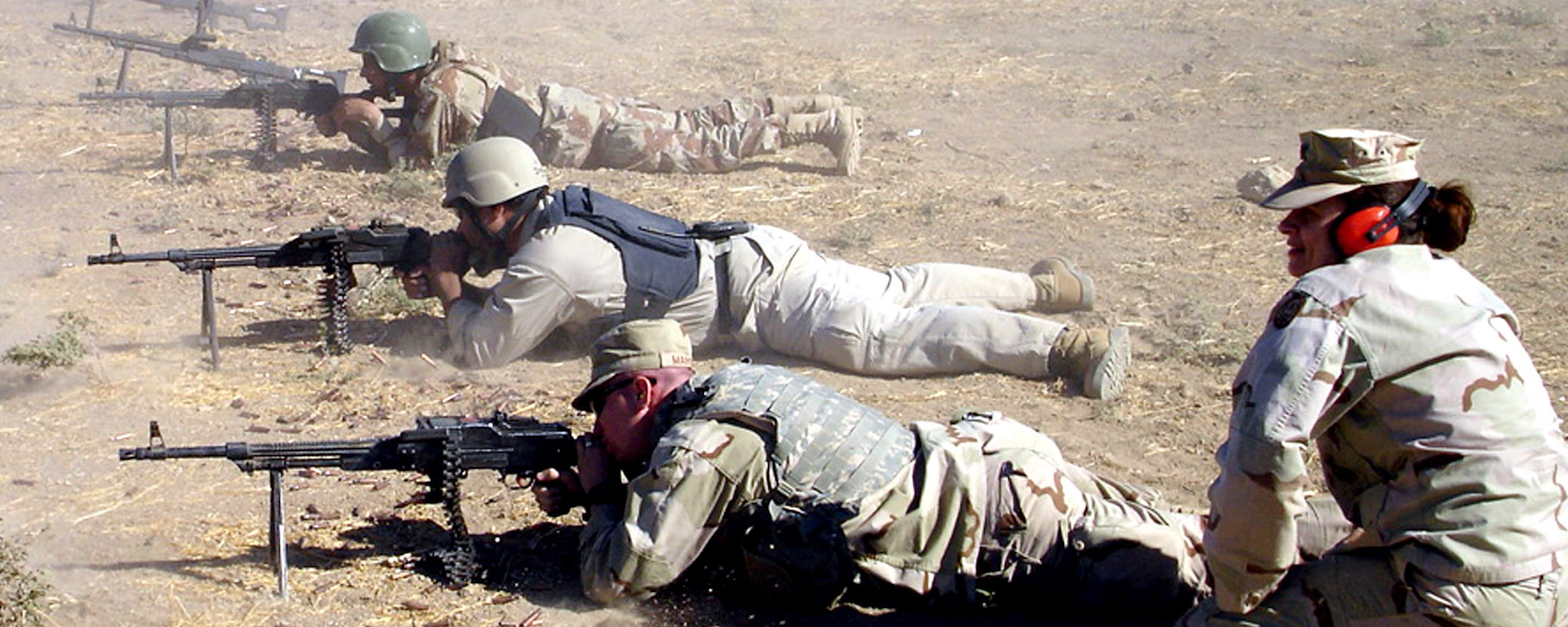Intro to Long Range Marksmanship
The first time I shot in a precision rifle match, I dialed in 1000y of elevation and 14mph of wind in the wrong direction. It took almost a whole box of ammunition before someone noticed the splash over in the parking lot about a yard away from some guy’s tailgate just barely covered behind a berm.
Take a minute and think about all the things wrong with what I just wrote. Long range shooting is hard, and just like life, it’s infinitely harder when you’re ignorant. It’s a thinking individual’s game. The amount of prep work that goes into it is unlike any other shooting discipline. It’s also a ludicrously expensive and time consuming hobby. Those who get good at it, I mean REALLY good at it, have devoted more hours and effort than most professionals do to their actual careers.
Most people see an anonymous person on Instagram who just dropped five grand on a new rig and go tagging steel with it at a few hundred yards, all the cuts edited together to make it look like they just strolled out onto the range and started shooting the hair off a gnats ass like it was nothing.
The truth is, those guys are likely taking shots far easier than they make it seem, are missing far more shots than they let on, and not truly utilizing their equipment to its maximum potential. They spent more time editing the IG video and deciding on hashtags than they did deciding how they wanted to make the most out of their range time. They might pontificate about spin drift and Coriolis effect, but can barely make a proper wind call. They’ll drop thousands on several guns and glass, but think that rolling your own handloads is for old-timers or just too hard.
My point is, this game, this industry in general, is full of folks in the saddle of the dunning-kruger effect knowledge/ignorance curve. If we are to move away from this trend, if we are looking to better ourselves and our skill sets, we need to treat the subject like the science that it is, and actively seek out and identify our own blind spots so that we may fill them in with knowledge as we learn. That will be the purpose of this post, and hopefully, several more to follow afterwards. The discipline of precision rifle however, carries with it a unique language. This jargon can seem quite daunting at first to the uninitiated, and unfortunately, has helped drive off many a novice shooter simply by making them feel as though the pool is too deep to swim. I think it prudent to begin a series of articles such as this by setting the terms of reference from the beginning, providing a primer that we can use to build on to later topics.

With that said, here are some of the most misunderstood terms that I have come across in my time:
Ballistic coefficient – An industry standard objective measure of a bullet’s performance. Expressed in unitless numerical terms according to a set standard, usually either the G1 or G7 standard model. When used in a ballistic calculator, ensure that you are not entering the incorrect BC measurement into the model. G1 and G7 are not interchangeable. The equation to determine ballistic coefficient is Sectional Density/ Form Factor
Sectional Density – The mass of the bullet divided by it’s cross-section perpendicular to its longitutinal axis. Since all modern bullets are cylindrical, that means that any two bullets with the same weight, and same diameter, have identical sectional densities.
Form Factor – A numerical comparison between the Coefficient of Drag between the projectile in question and the chosen industry standard (G1, G7, etc…).
Coefficient of Drag or Cd – A unitless measurement of the amount of drag on a bullet in flight. Basically a measurement of how aerodynamic a projectile is.
MOA – Minute of angle/Minute of Arc/Arc minute. An angle measuring 1/60th of a degree. A convenient way of objectively measuring a firearm’s precision, and a handy unit of measurement for observing and communicating with respect to object at long range. Subtends to 1.047” at 100 Yards, which often gets rounded off to simply 1 inch per hundred yards to make things easy. Most hunting scopes are available with turret adjustments in ¼ MOA “click” increments. Angular measurements such as MILs and MOA are very useful for estimating distance to target when you don’t have a laser rangefinder handy, and for spotting corrections in shots; i.e. “impact is 2 MOA low, come up 8 clicks”.
MIL – Milliradian. Another angular method of measurement measuring 1/1000 of a radian. Effectively, it is defined by how much it subtends; 1 Mil subtends to 1m at 1000 meters. This “Metric” method can make the mental arithmetic simpler for some users. Most tactical-style scopes offer reticle with either dots or hash marks in the reticle that correspond to MIL measurements, and turret adjustments in 1/10 MIL increments. The main takeaway here is that MILs and MOA are not interchangeable. Always make sure to have your turret adjustments match the reticle hash marks, i.e. MOA reticle/MOA Turrets. Many older scope models would use MIL dots with MOA adjustments, so be aware and make sure you make a smart purchase.
Subtend – How much an angular measurement “spreads out” over distance.
Spin Drift – A slight right or left drift caused by the rapid spinning of the bullet and its aerodynamic effect. Measureable and predictable, and therefore easily compensated for, but nearly insignificant for most applications. A variation of the Magnus effect, the same effect that makes a baseball curve.
Coriolis Effect – A deflection of the bullet caused by its gyroscopic stability trying to resist turning with the earth (in the most simple terms). The shooters’ latitude and the direction (azimuth) of the shot are factors that play into how much the deflection is and in what direction, but in any case, the effect is almost entirely negligible until extreme ranges for small arms.
Internal Ballistics – Everything that happens with regards to the firing of the weapon while the bullet is still in the barrel. This includes everything from the striking of the primer to the bullet’s last contact with the muzzle.
External Ballistics – Everything that happens to the bullet after it has left the muzzle of the rifle, but before it impacts the target. The behavior of a bullet in flight.
Terminal Ballistics – The behavior of the bullet after impact and the effect it has on the intended target.
DOPE – Information recorded during the course of shooting used to predict future shooting. This includes everything from elevation and windage adjustments, to environmental factors. Often backronymed as “Data Observed on Previous Engagements”.
Drop – Vertical adjustments for elevation made to counteract the effect of gravity.
Drift – Horizontal adjustments made for wind and other factors.
Hold Off/Hold Over – Using the reticle’s hash marks/dots as opposed to making turret adjustments in either elevation or windage.
This is not intended to be an exhaustive list, and the definitions listed only cover the wave tops. Future posts will cover these in greater depth, and hopefully will serve to help any new shooters to make more informed decisions on training, techniques and purchases. If you come away from reading this with questions, that’s good. Leave them in the comments or shoot them to the SOFLETE staff. We’d be more than happy to answer them.
Coming soon: Basic Aerodynamics and how it applies to external ballistics
Major Clutch is an active duty officer who shoots long range competitively in between deployments, overseas assignments, and helping raise his family of heathens. He is a huge nerd who spends an inordinate amount of time reading and re-loading. We at SOFLETE couldn't think of a better person to explain the science of marksmanship to our readers.





